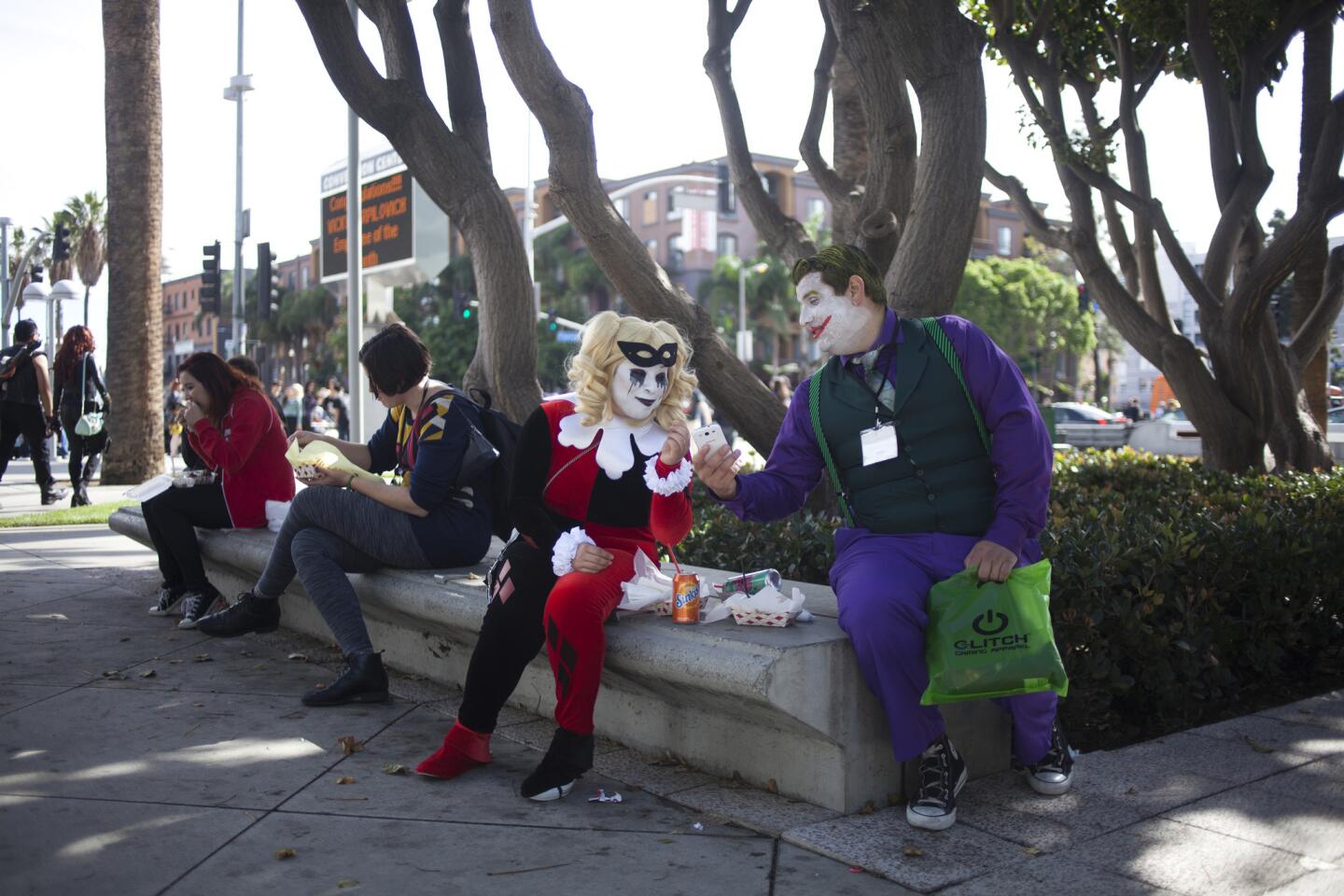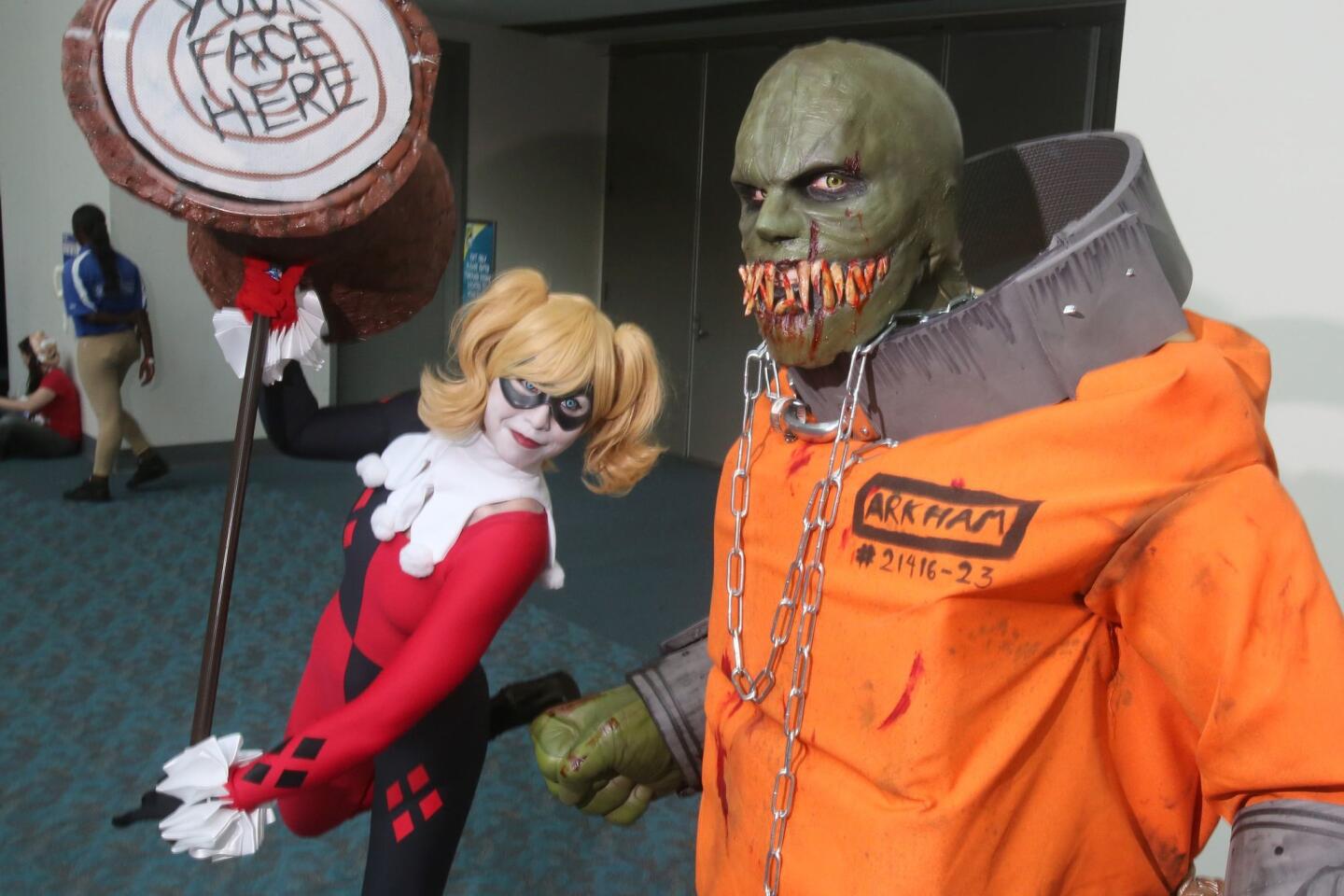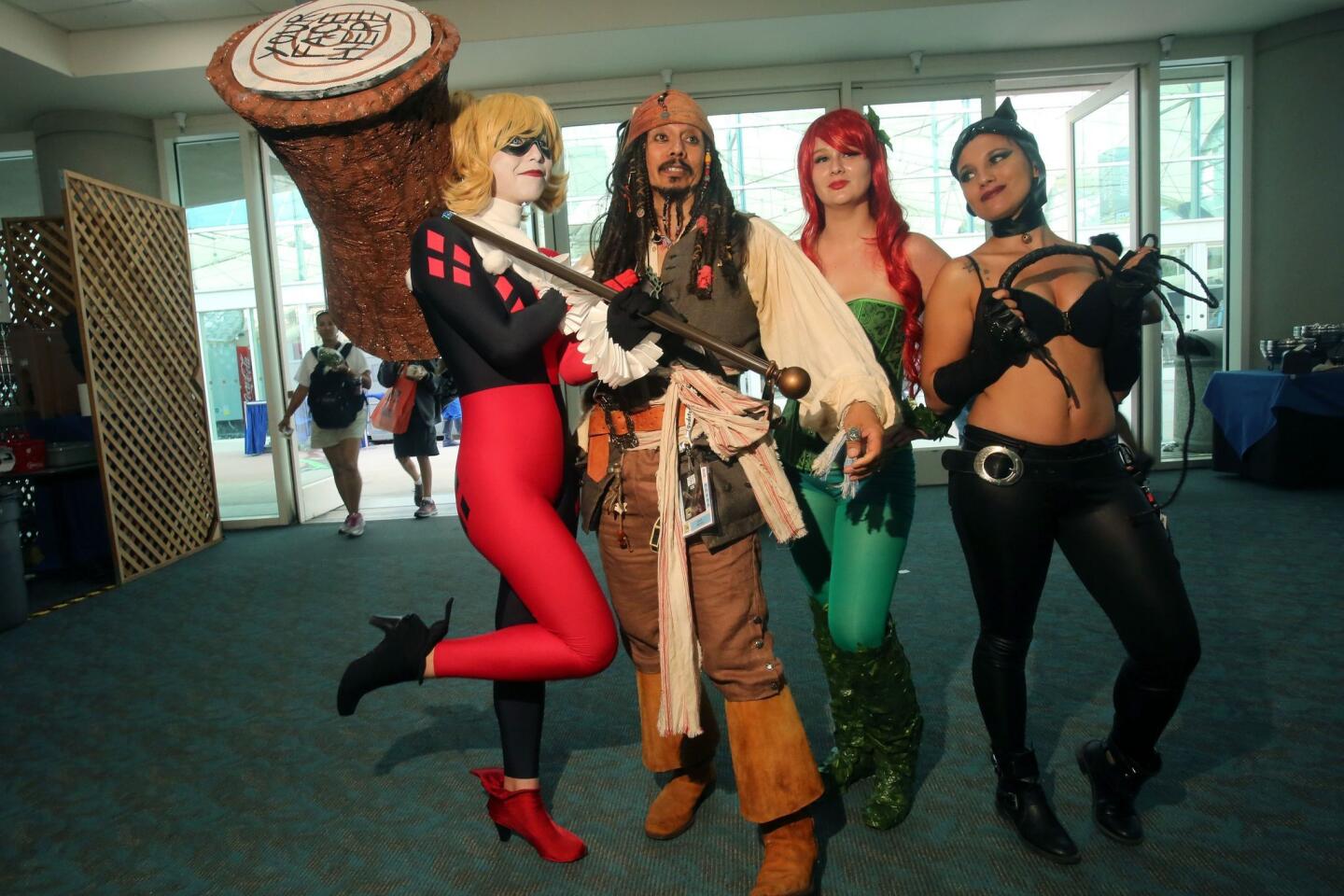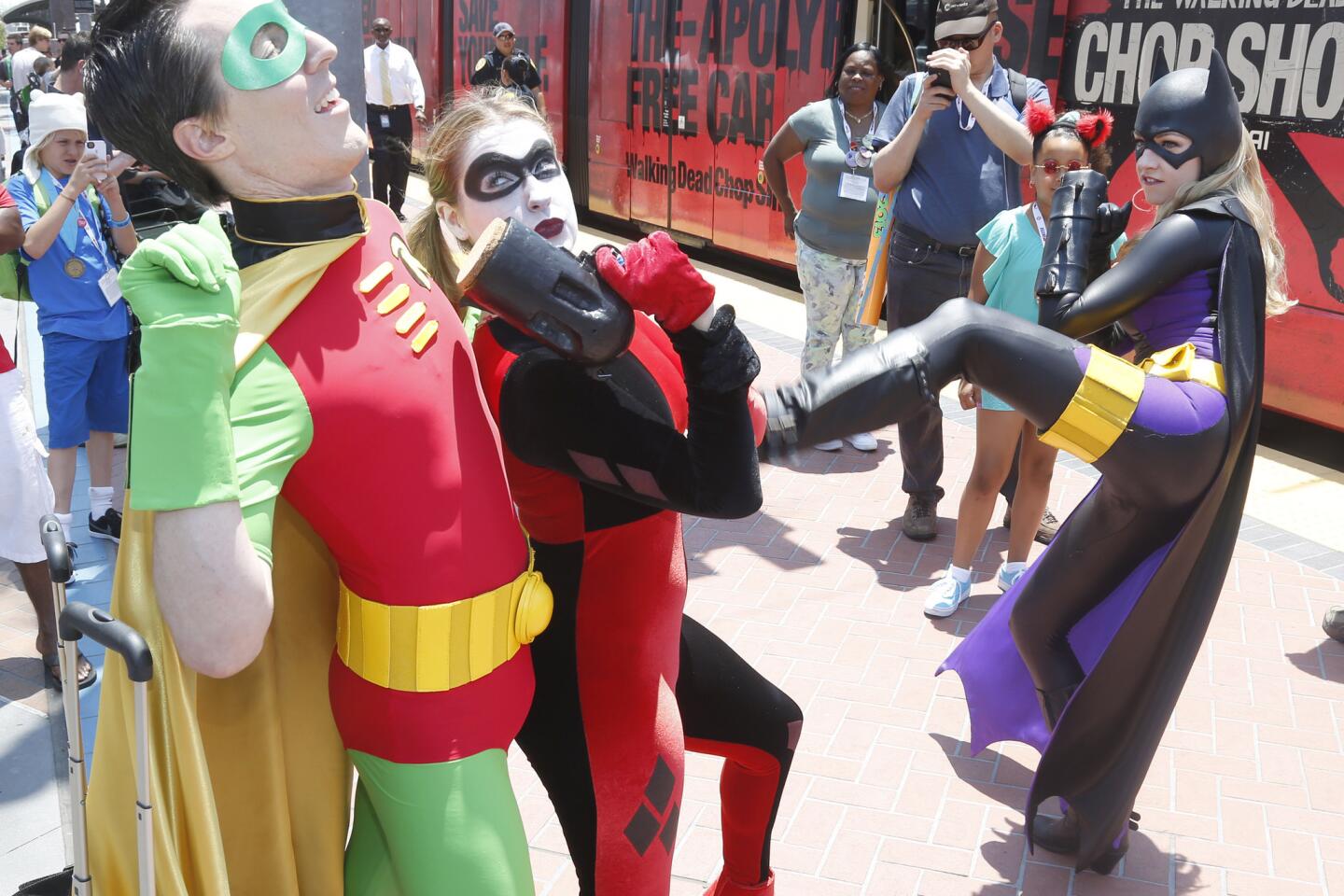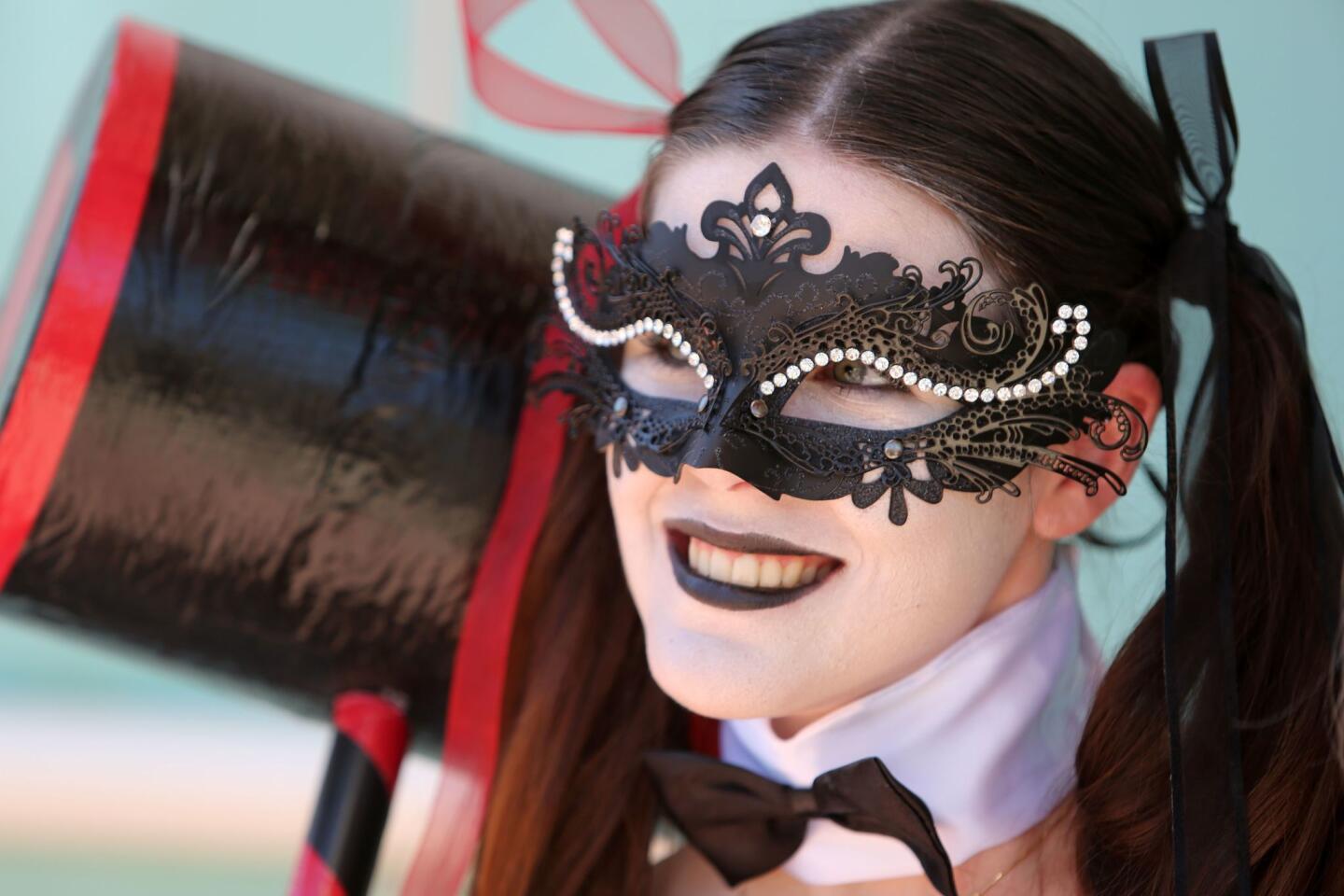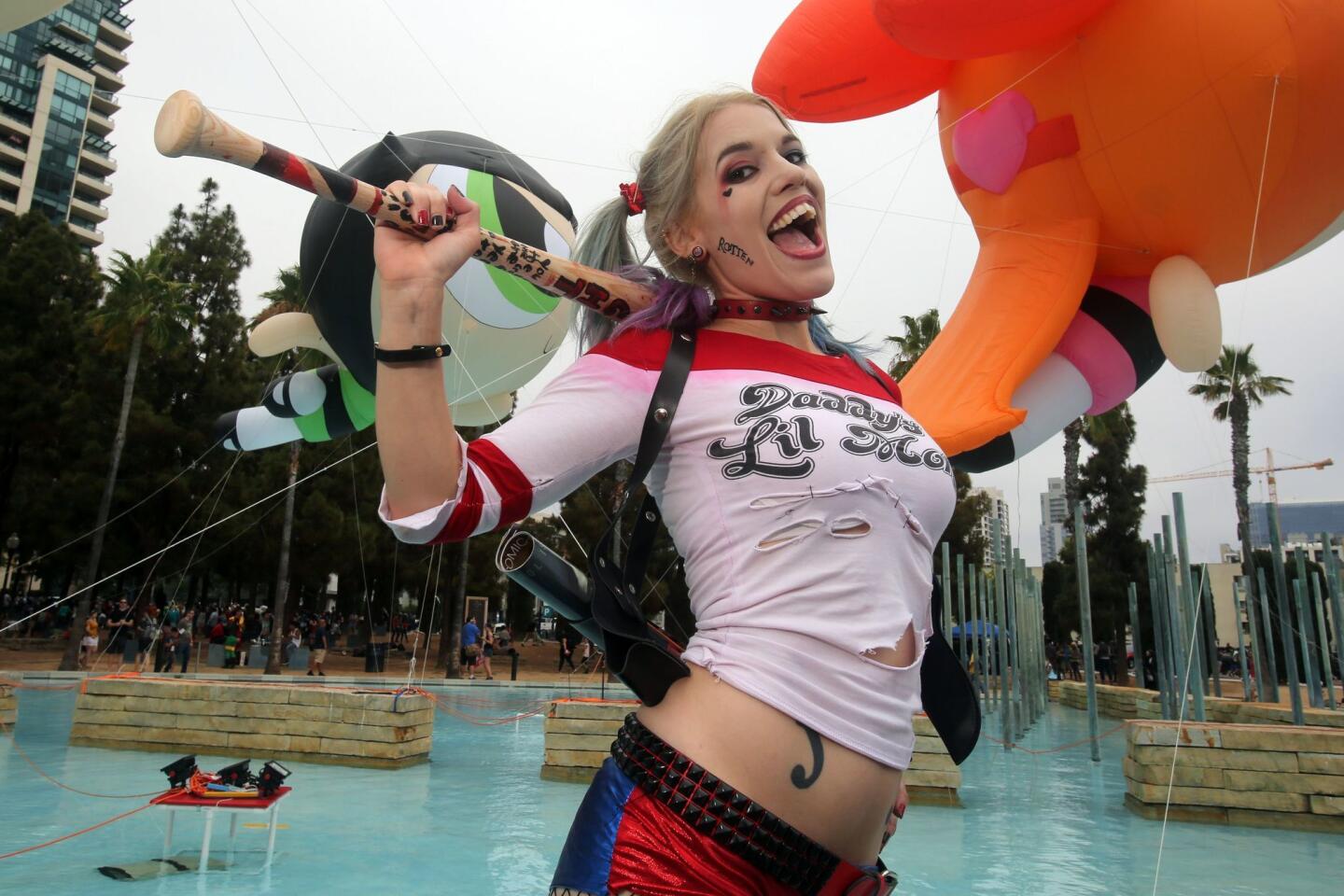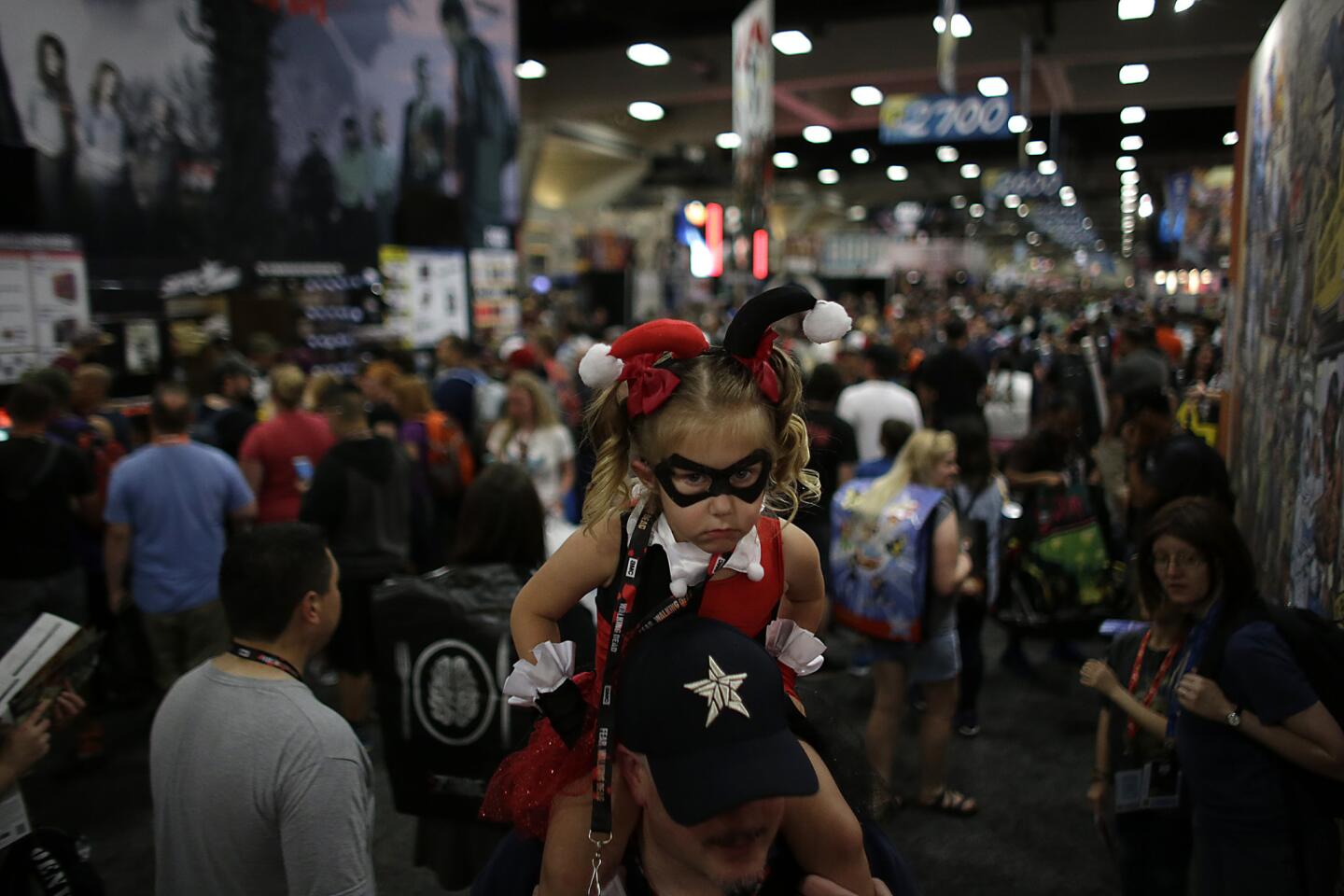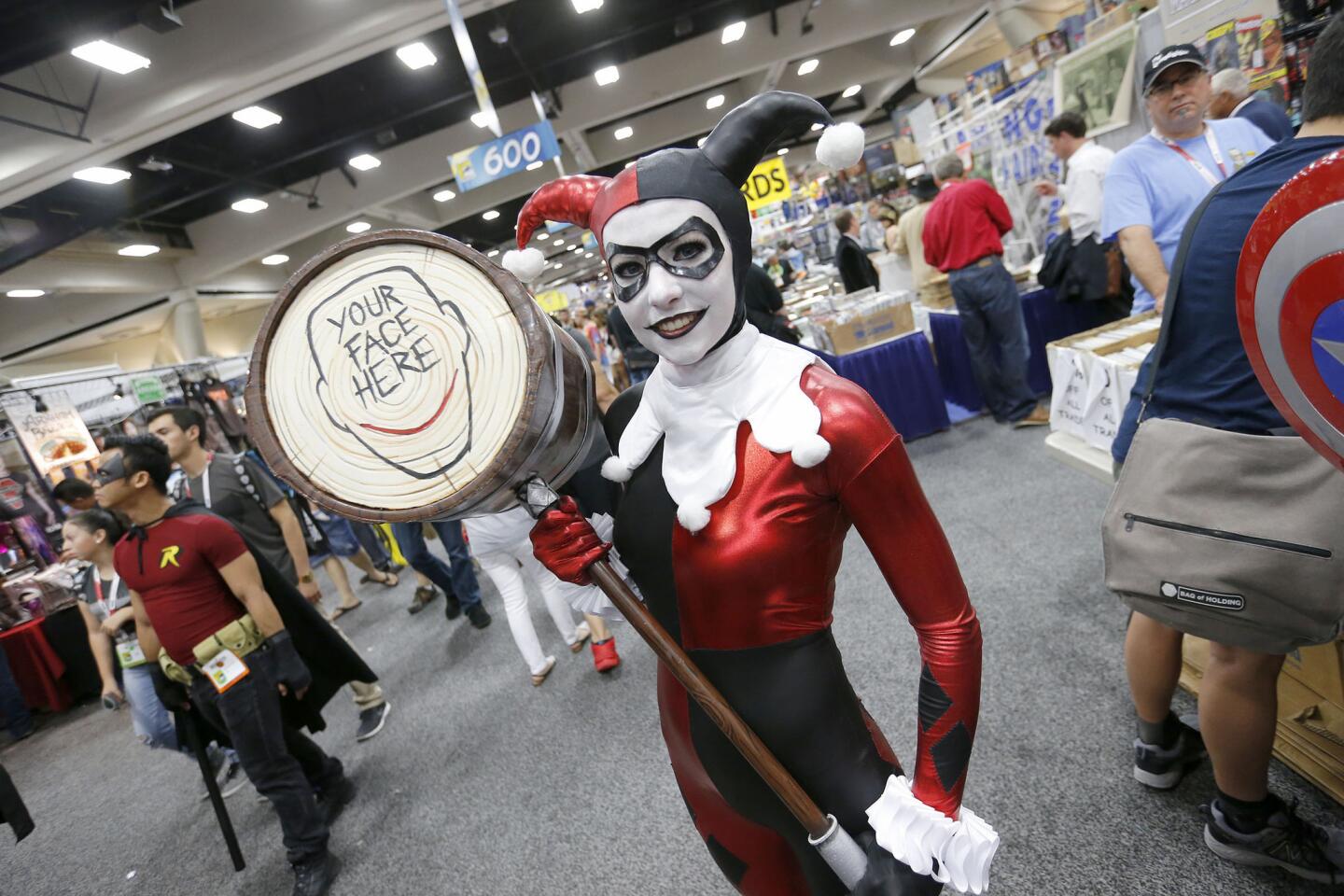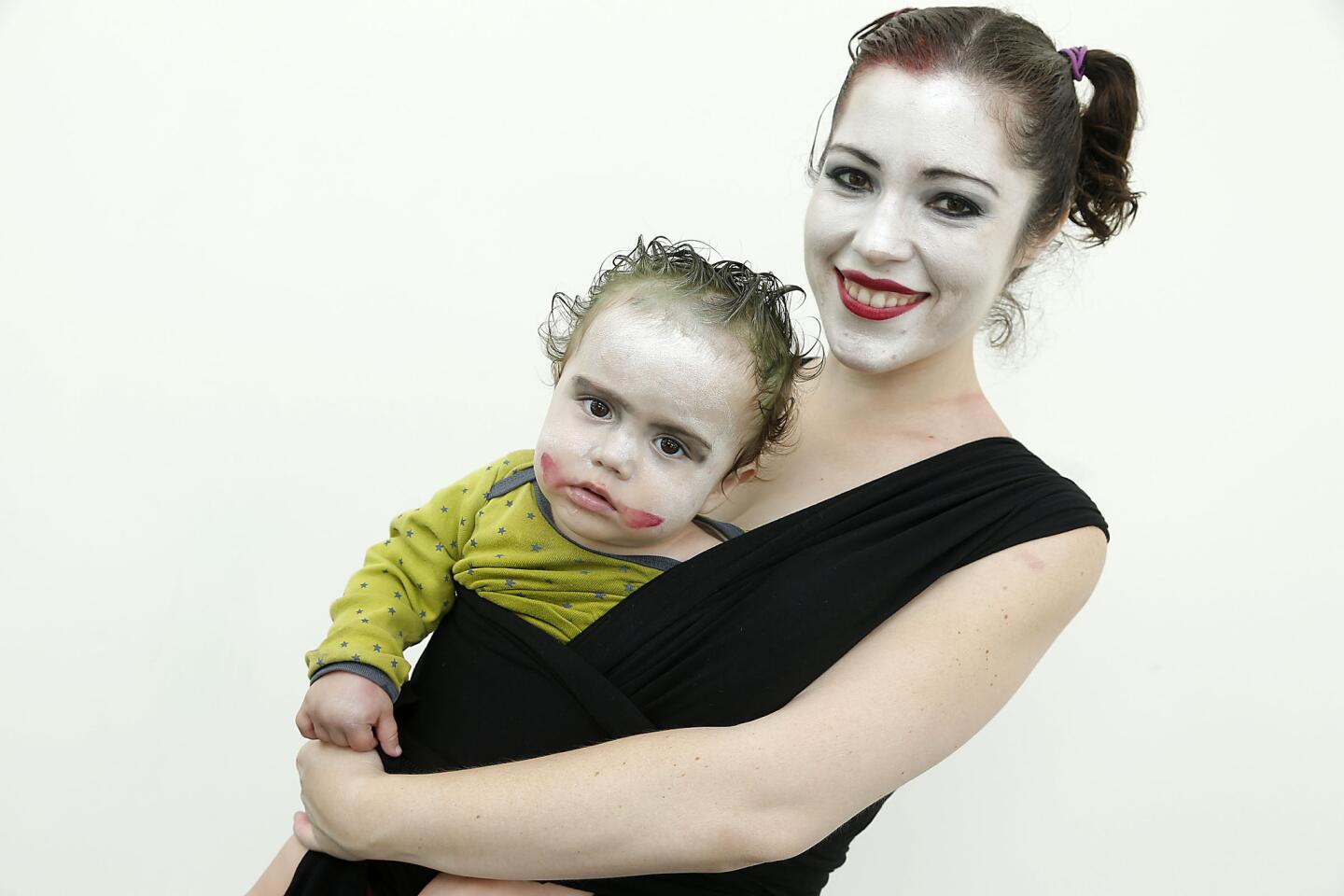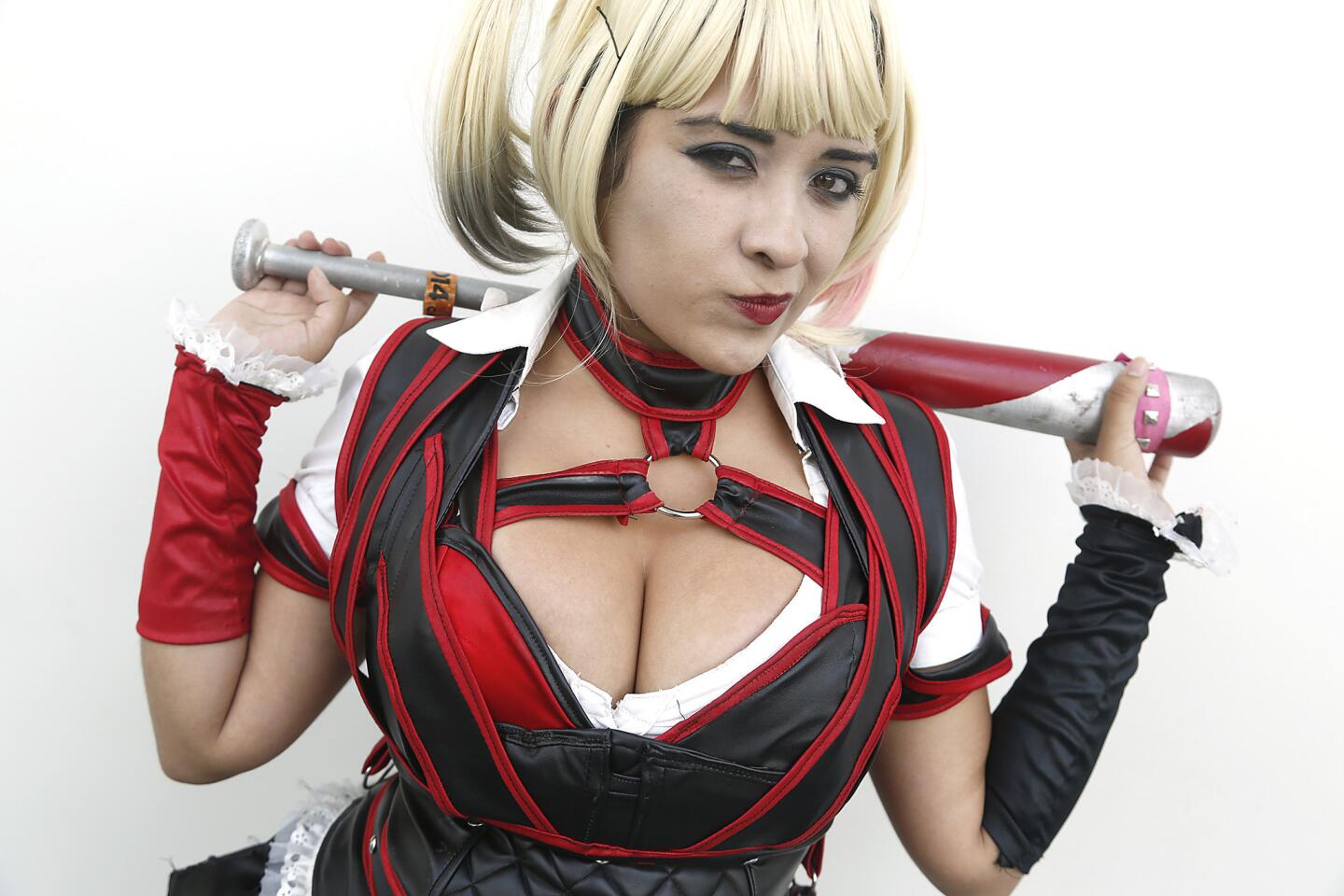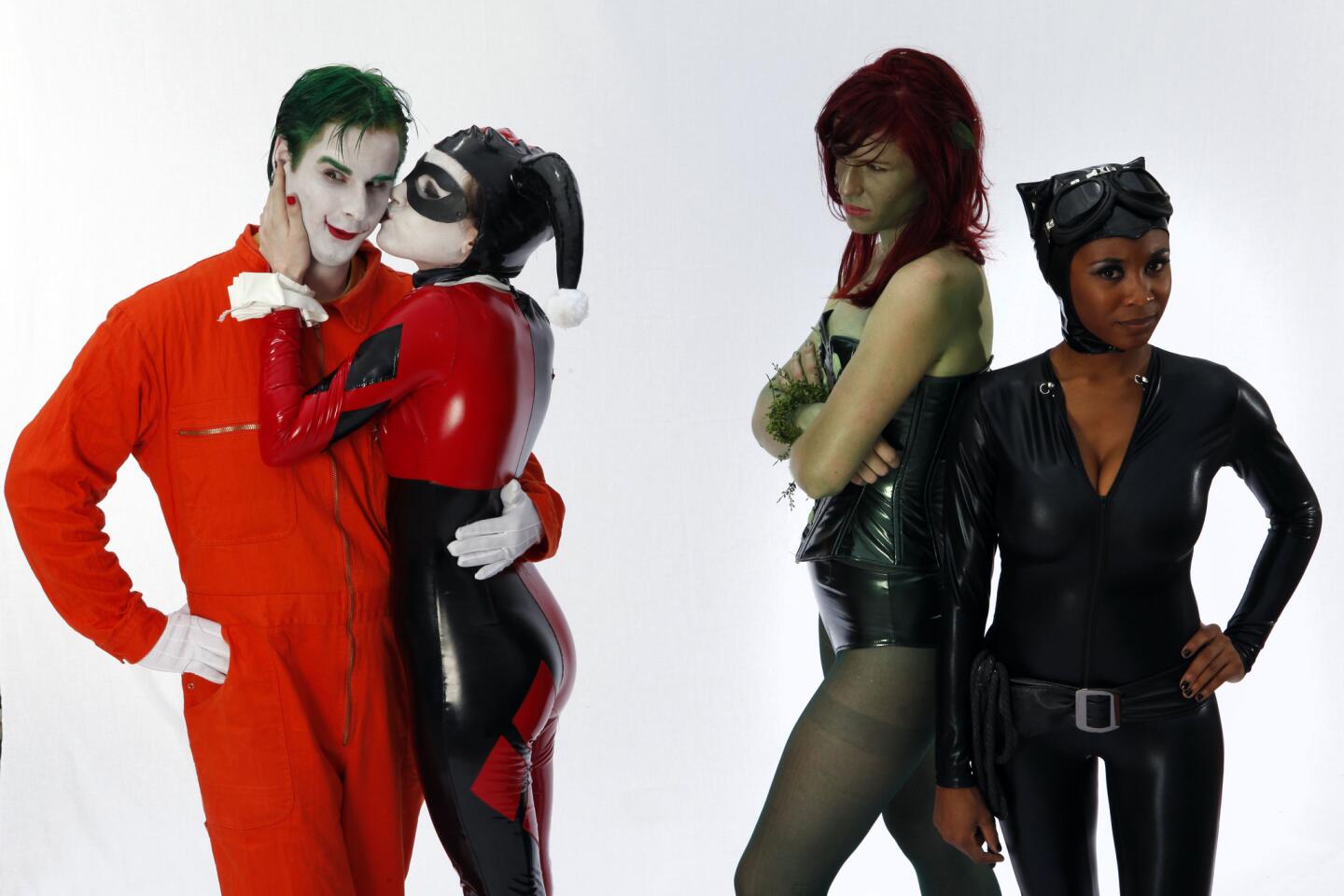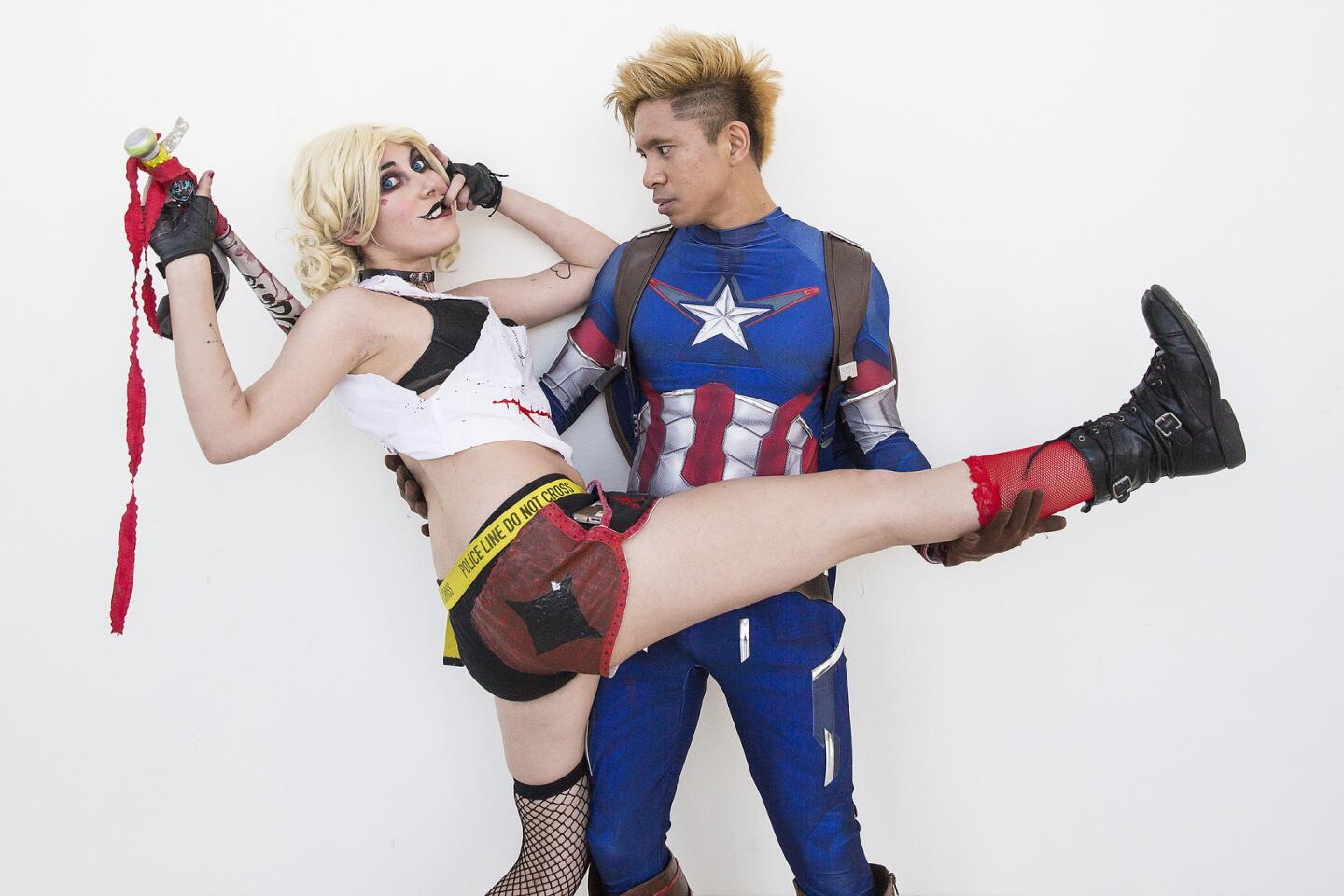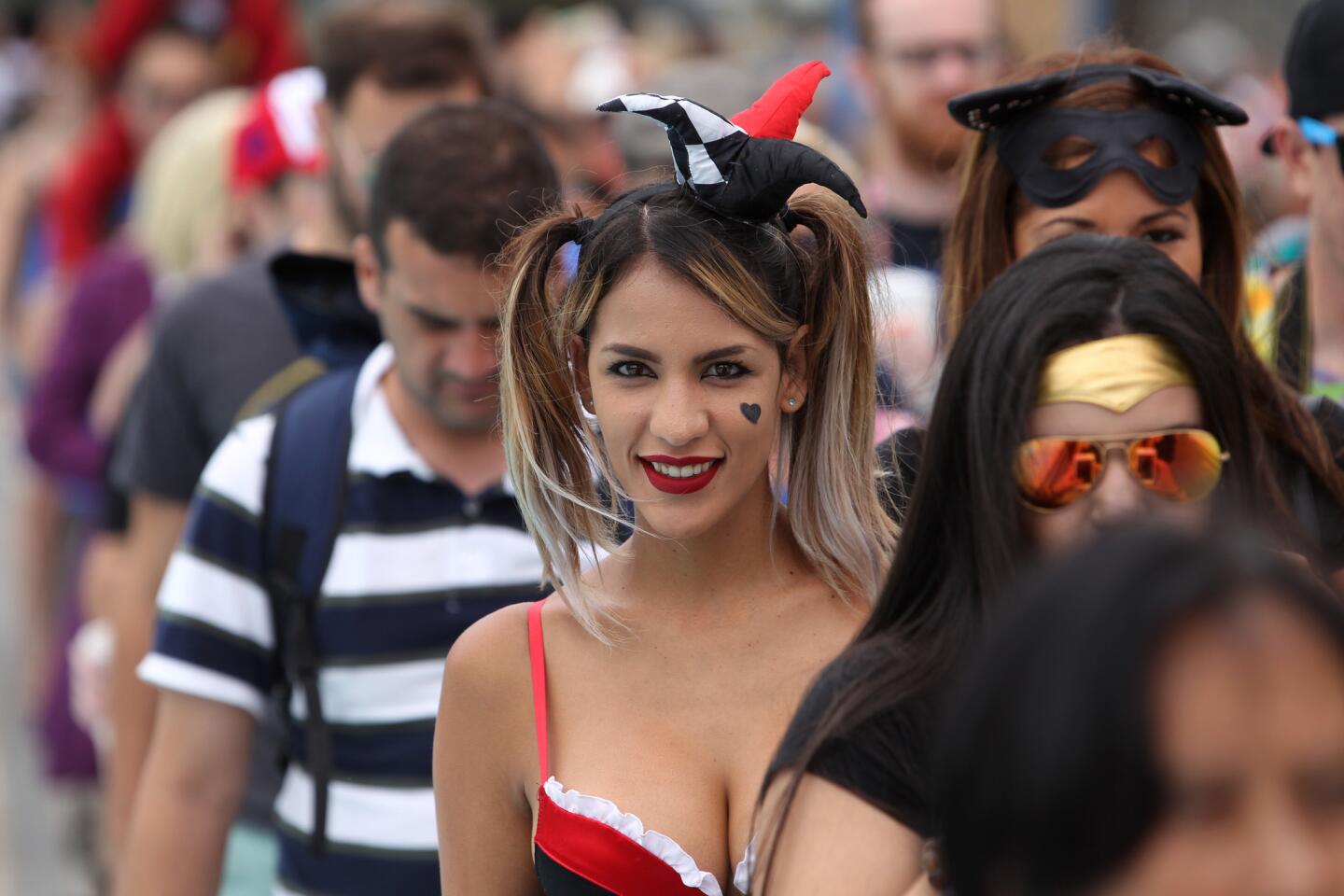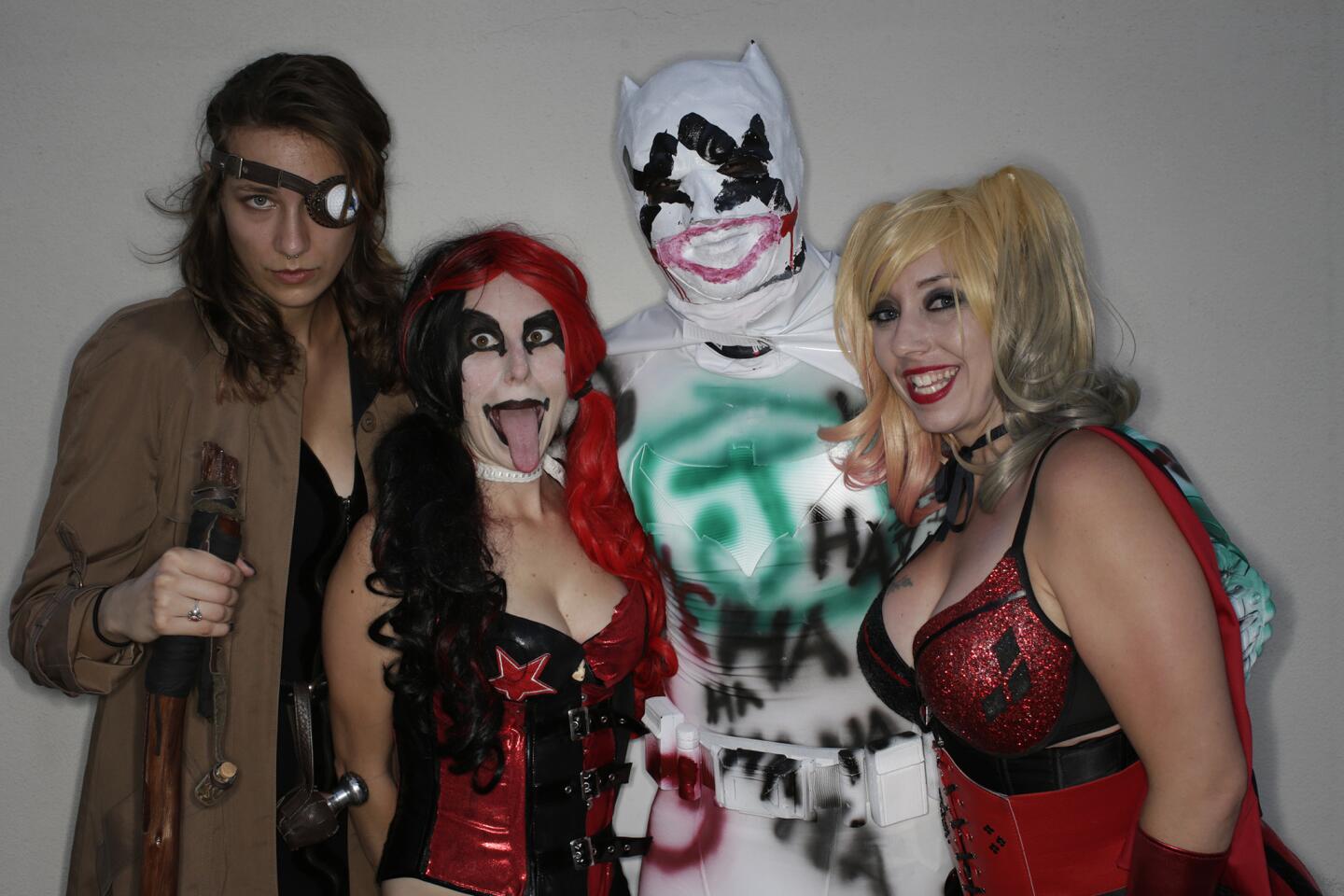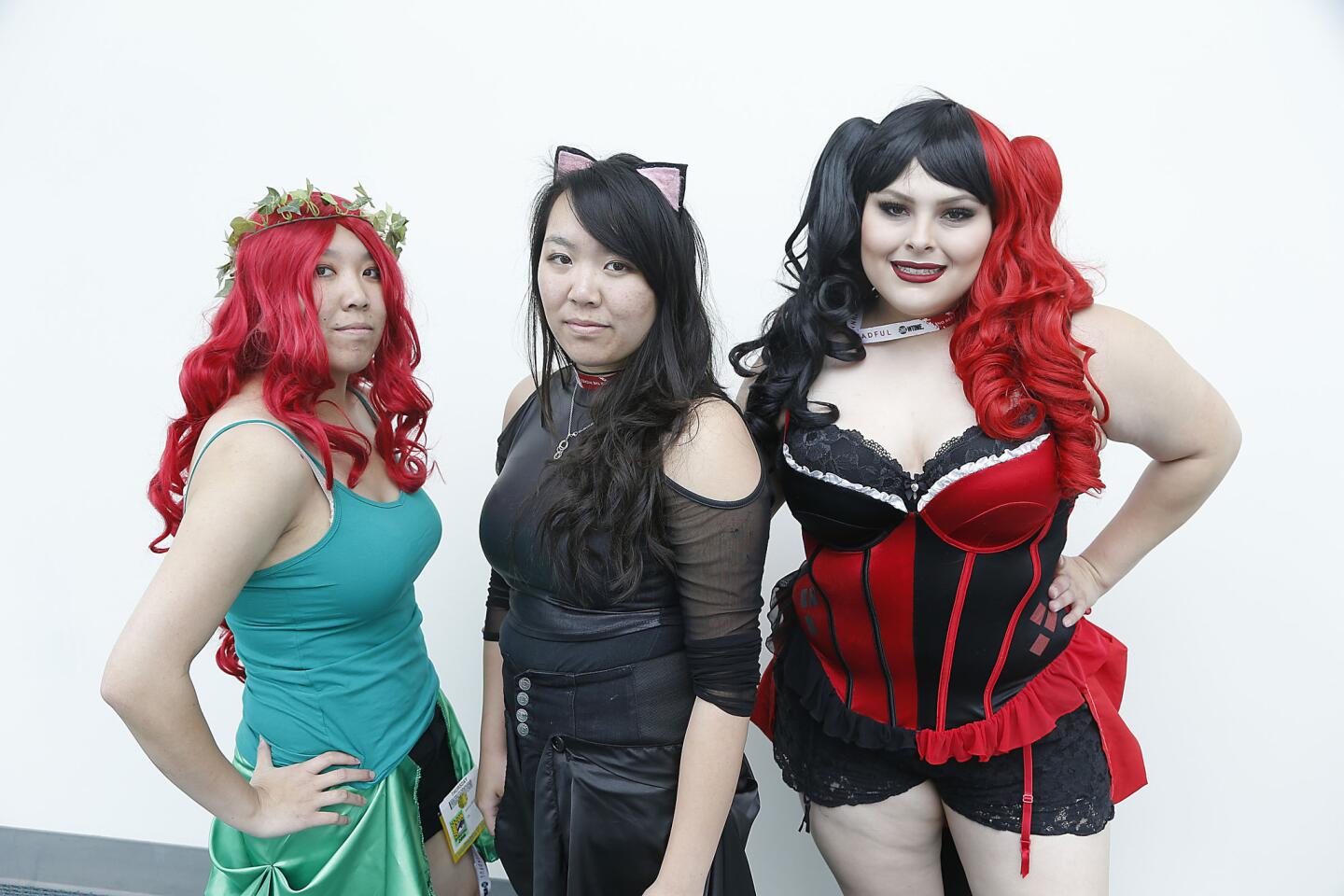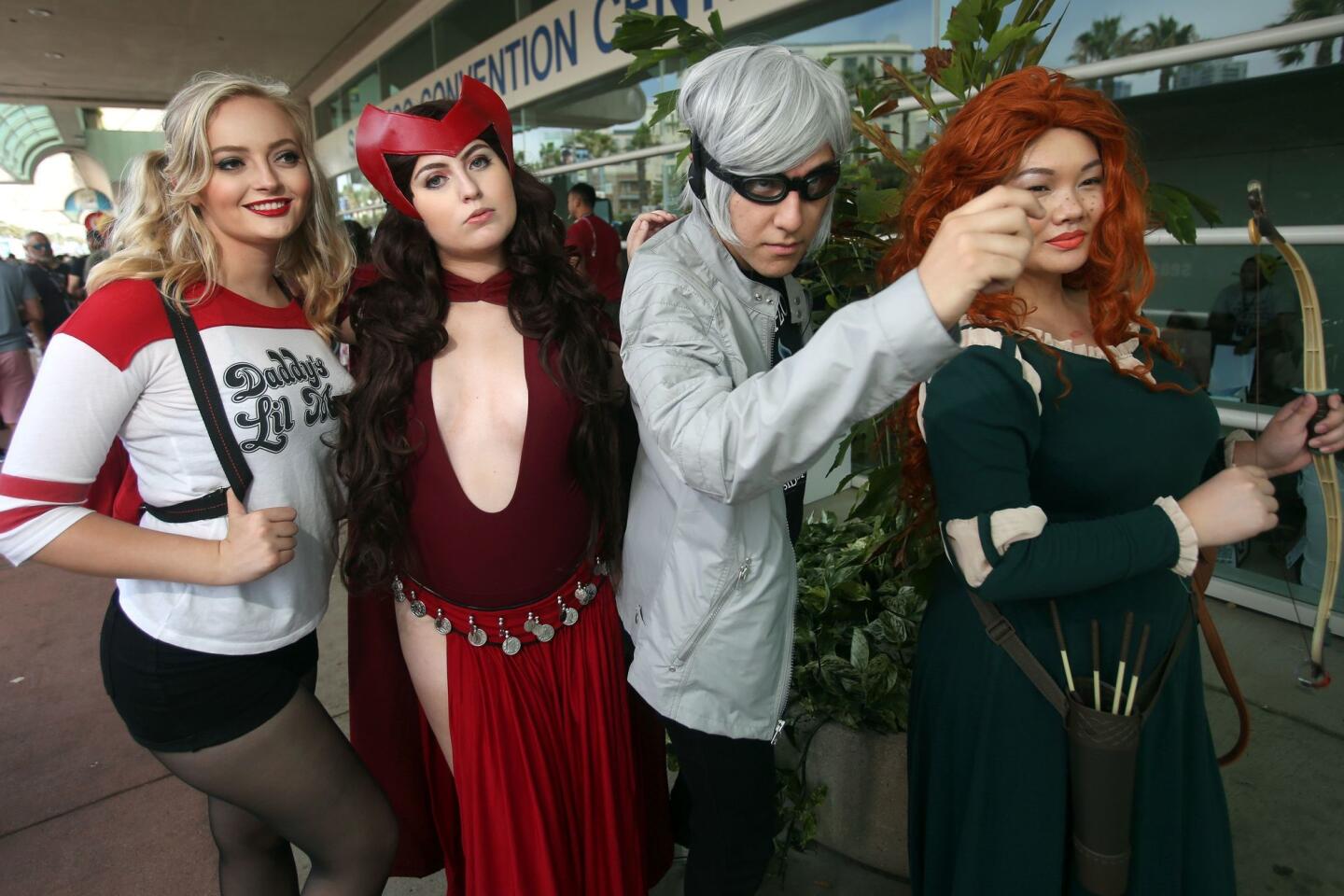Who is Harley Quinn? How ‘Suicide Squad’s’ pigtailed antihero went from sidekick to Margot Robbie superstar
- Share via
Harley Quinn Smith, 17-year-old daughter of film director Kevin Smith, has gotten comments about her distinctive name ever since she can remember.
“ ‘Oh cool, you’re named after Harley Davidson,’ ” she said people often respond after she introduces herself. “ ‘Are your parents huge motorcycle enthusiasts?’ And I’ll say, ‘No, no that’s not it. But you’ll get it one day.’ ”
That day has come.
With the lead-up to Friday’s opening of DC Entertainment’s “Suicide Squad,” Margot Robbie as Harley Quinn has taken center stage on posters, billboards and TV commercials. You could barely walk three feet at San Diego’s Comic-Con International last month without bumping into a mallet-wielding, pigtail-swinging Harley Quinn cosplayer. Models mimicking her wide smile mug in Hot Topic ads selling Harley Quinn-style harlequin hot pants plus bomber jackets. And three months before the movie premiere, the trades were writing that a Harley Quinn spinoff series was in talks at Warner Bros.
The chipper comic-book character with a voice like Marisa Tomei in “My Cousin Vinny” and a love for Batman nemesis the Joker has gone mainstream.
“Now when I say my name,” Smith related, “people say, ‘Oh my God, like “Suicide Squad.”’ Now you get it.”
Even “Suicide Squad” director David Ayer didn’t get it at first. “We had no idea Harley Quinn was going to explode,” he said. “We had no idea people were going to connect.”
See the most-read stories in Entertainment this hour »
It was a pigtailed army of makeup-smeared cosplayers at back-to-back Comic-Cons in 2015 and 2016 that tipped off the new squad.
“We went to Comic-Con last year, and there were so many Harley Quinns,” Robbie said. “We hadn’t even finished shooting the movie by that time and there weren’t any trailers out or anything. This year was the most exciting. Everyone knew the details of the costume now and got really specific with it. I even saw guys dressed up as Harley Quinn.”
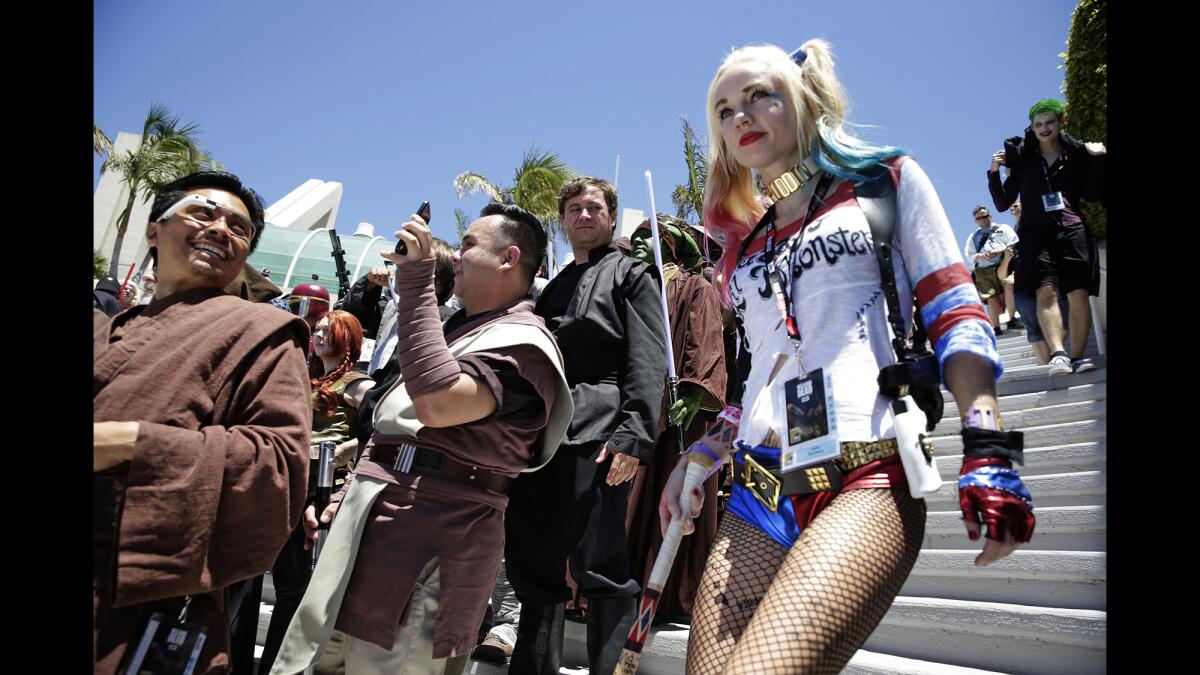
Quinn may have started off playing second banana to the legendary DC comics villain, but over the years her presence has grown.
Just last April, three of her comics, “Harley Quinn & Suicide Squad April Fools Special,” “Harley Quinn” and “Harley Quinn and Her Gang of Harleys,” outsold Superman and Wonder Woman. In 2015, DC dedicated the entire month of February to Quinn with 22 variant comic covers. The No. 1 searched Halloween costume for 2015? It was Harley Quinn, outranking “Star Wars” characters and Minnie Mouse.
Is Harley Quinn the next comic-book blockbuster movie star?
Quinn cartwheeled into Gotham looking like she tumbled out of a deck of cards. But her first appearance was not in the comics. It was in the 1992 noir cartoon series “Batman: The Animated Series.” Dreamed up by Bruce Timm and Paul Dini, she was originally concocted as just another member of the Joker’s cartoony gang.
But Dini realized there was more to Quinn than the average henchwoman. Squealing trademarked lines of tenderness at her beloved “Mistah Jay” or “Puddin,” the love between the Joker and Quinn, who hid her identity behind a traditional harlequin hat and simple red-and-black leotard, was fraught with neglect, robberies, mayhem, violence and abuse. Through it all Quinn stayed oddly, and sometime spookily, cheery.
“She was a counterpoint to what was going on with Batman,” Dini explained. “She just became this great device to lighten things up when it got a little heavy.”
Quinn brought the fun, something fans have been asking from the DC movie universe since the premiere of “Batman v Superman.” But she also helped ground Gotham. Despite jumping out of cream pies and being able to arabesque effortlessly into the air, the fact that Quinn was more of a real, flawed character made her much more relatable than her bad guy counterparts. Audiences felt for her, and her popularity grew.
“She became a character who is a little bit more sympathetic than some of the other villains around her,” Dini said. “When you’ve got a character like Riddler or Penguin or even Catwoman, they’re motivated by what they are — thieves or gangsters or something like that. With Harley she really is a wayward soul who got swept into this out of her own passion and her own unwise choices. So she’s trying to figure out how she belongs in this world, and if she should even be in the world.”
Dini revealed Quinn’s complicated origin story in the 1994, Eisner-winning comic “Mad Love,” which introduced the Joker’s psychiatrist, Dr. Harleen Quinzel, Harley’s real-life persona. The story showed how Harleen fell for the laughing mad man and the troubled, often abusive and complicated relationship that would follow.
Real-life psychologist, and host of “The Arkham Sessions” podcast, Dr. Andrea Letamendi, explained that Harley’s impulse-control complications provide a real-life link to her fans.
“What’s appealing about Harley is she makes poor decisions. She is impulsive and she makes mistakes,” Letamendi said. “We like that about her, that’s relatable and we forgive her for that. And we want her to be resilient against the Joker’s abuse, against things that happen to her. We want her to overcome and want her to learn from her mistakes.”
In more recent “Harley Quinn” comics, however, she has a fresh new perspective. Quinn’s kicked Joker to the curb, moved out of Gotham to Coney Island, got a new job at a senior citizens center and works out her aggression with a Roller Derby team.
“We wanted to take her out of Gotham because if she had stayed in Gotham she still would have been dealing with all the Gotham characters, Batman and Joker,” “Harley Quinn” co-writer Amanda Conner said. “She would have been a supporting character in her own book. … What better place for a Clown Princess than Coney Island?”
“It’s probably the healthiest thing for a character to evolve,” added co-writer Jimmy Palmiotti. “We’ve definitely taken lot from the the cosplayers. Amanda keeps changing the costume every issue.”
At this point the fans are influencing the creators and the creators are influencing the fans. And Quinn keeps growing.
Now when I say my name, people say, ‘Oh my God, like “Suicide Squad.’ Now you get it.
— Harley Quinn Smith
Was it difficult for Ayer to persuade Robbie to don the dip-dyed pigtails of Quinn? Not at all. The allure of working on this character with Ayer paired with his plans for the character were enough.
“There was no script,” Robbie said. “No one else was attached. And I hadn’t read the comics before. So I really didn’t have any context for it, other than working with David, which I wanted to do so badly. I was ready to sign on just on the premise alone but then he described two different Harley scenes and I said, ‘Oh my God, I’m in. I’m so in.’”
The scenes that sealed the deal?
One showed Harley Quinn, alone in her prison cell, hanging upside down. It became a famous, crowd-rousing shot that brought fans to their feet when the first “Suicide Squad” footage debuted at Comic-Con in 2015.
Ayer, Robbie said, “described that scene and her unraveling from the ceiling sort of like a bat sleeping upside down. It was so cool.”
The second scene never made the film. It would have shown a domestic squabble between Quinn and her Mistah Jay.
“Joker is banging on the door of the bathroom,” Robbie said, “and she’s like, ‘One minute, honey, I’m putting my makeup on…’ and then getting a tattoo gun and tattooing her own face.”
Perhaps, if negative reviews don’t put off “Suicide Squad” newcomers, the scene might turn up in that spinoff people have been talking about, a Harley Quinn tentpole film of her very own.
Twitter: @MdellW
ALSO
Inside the ‘Suicide Squad’ star tour and why Warner Bros. needs the movie to work, and work big
Review: ‘Suicide Squad’ is a team, and a movie, in search of a mission
‘Suicide Squad’ director David Ayer on unleashing his movie into the ‘Roman arena’ of fandom
Get to know the faces of the ‘Suicide Squad’
Harley Quinn and the Joker’s bonkers ‘Suicide Squad’ costumes are full of insane details
More to Read
Only good movies
Get the Indie Focus newsletter, Mark Olsen's weekly guide to the world of cinema.
You may occasionally receive promotional content from the Los Angeles Times.

